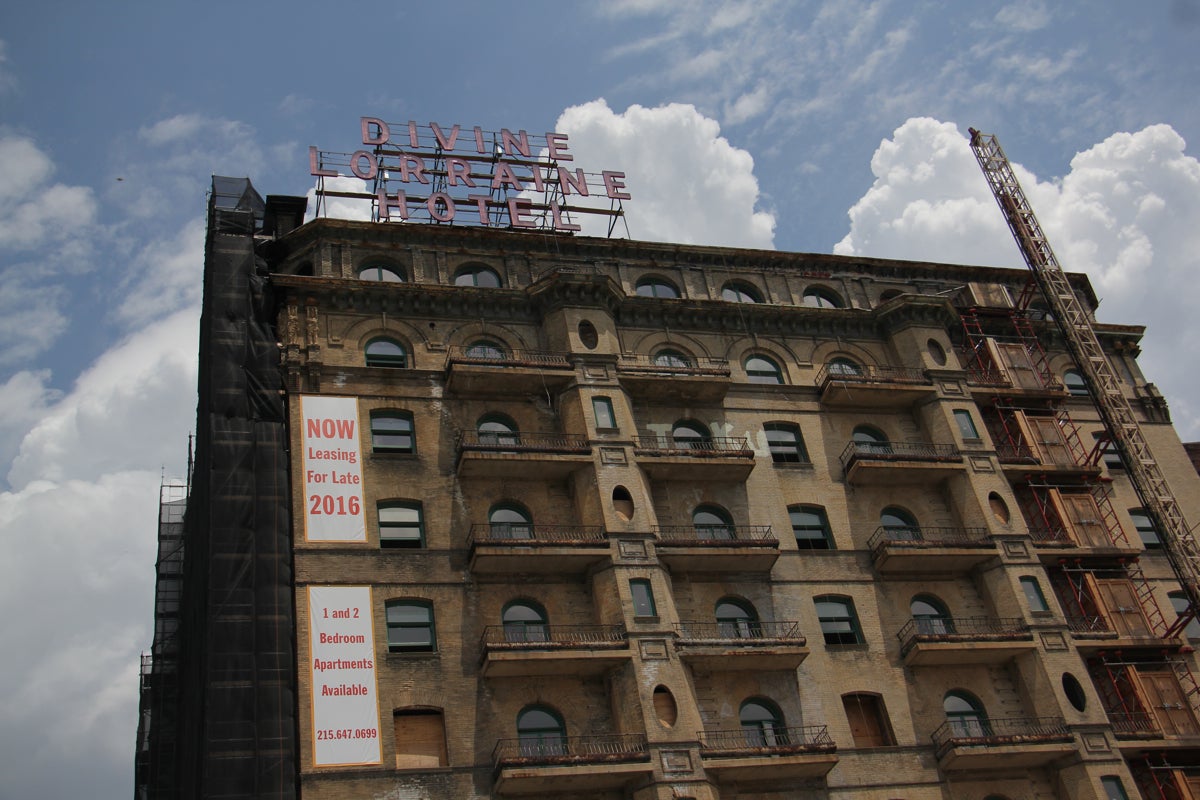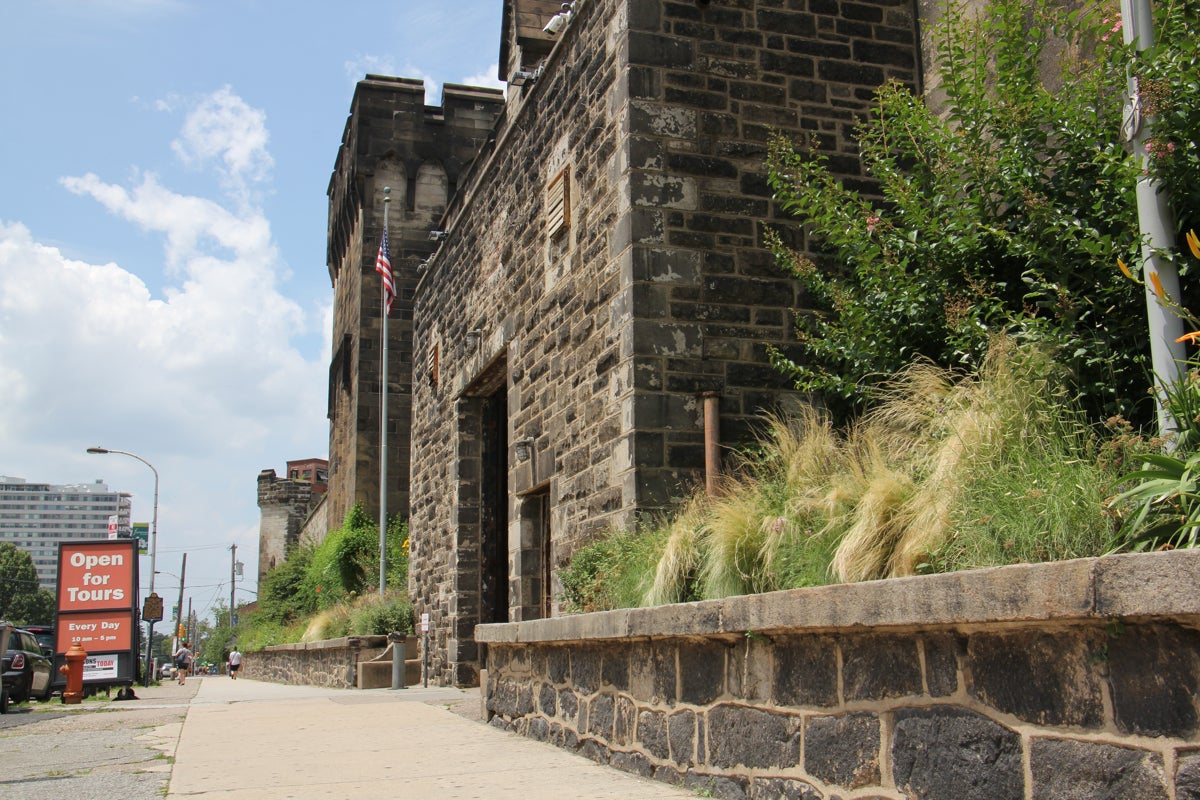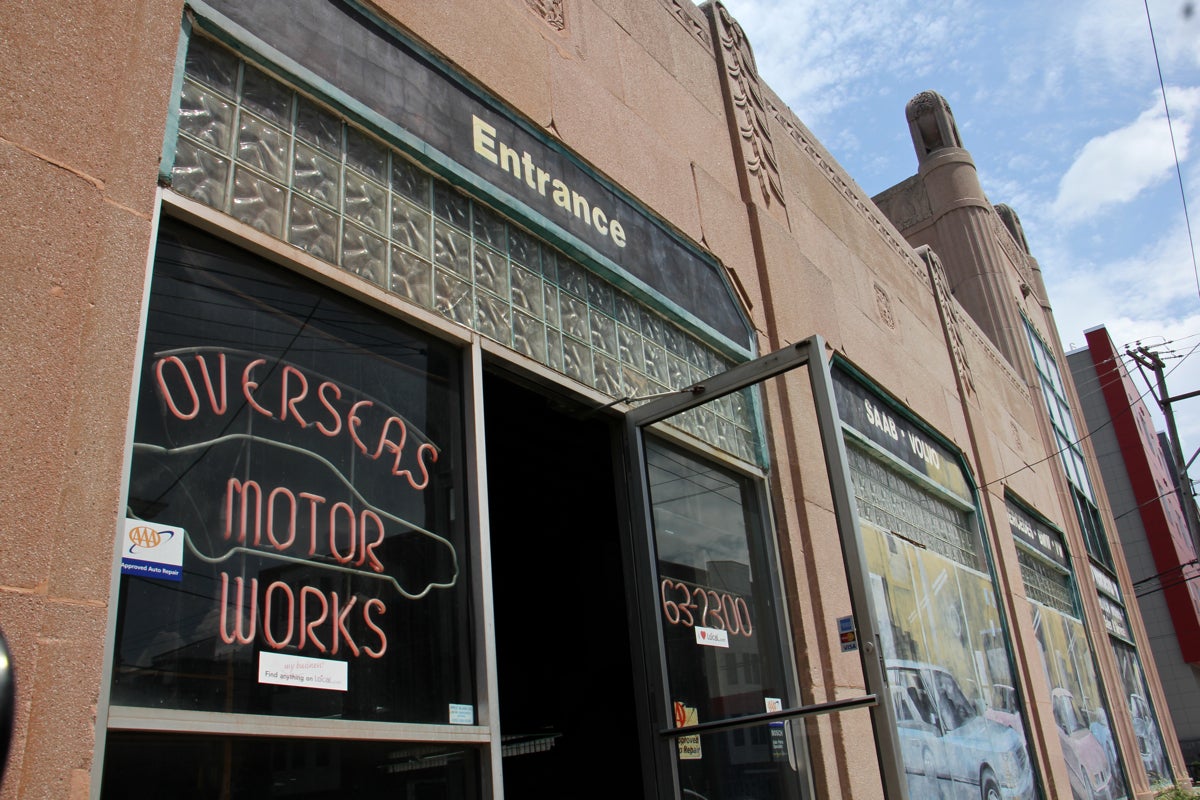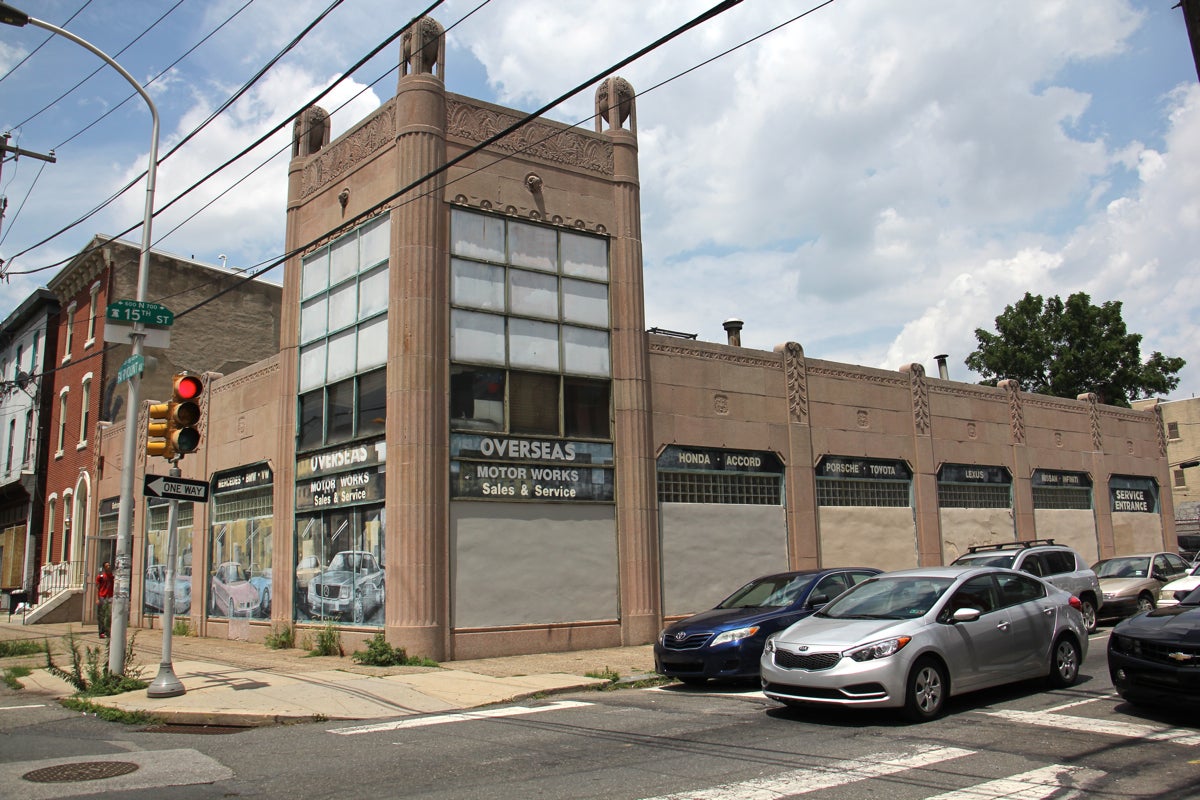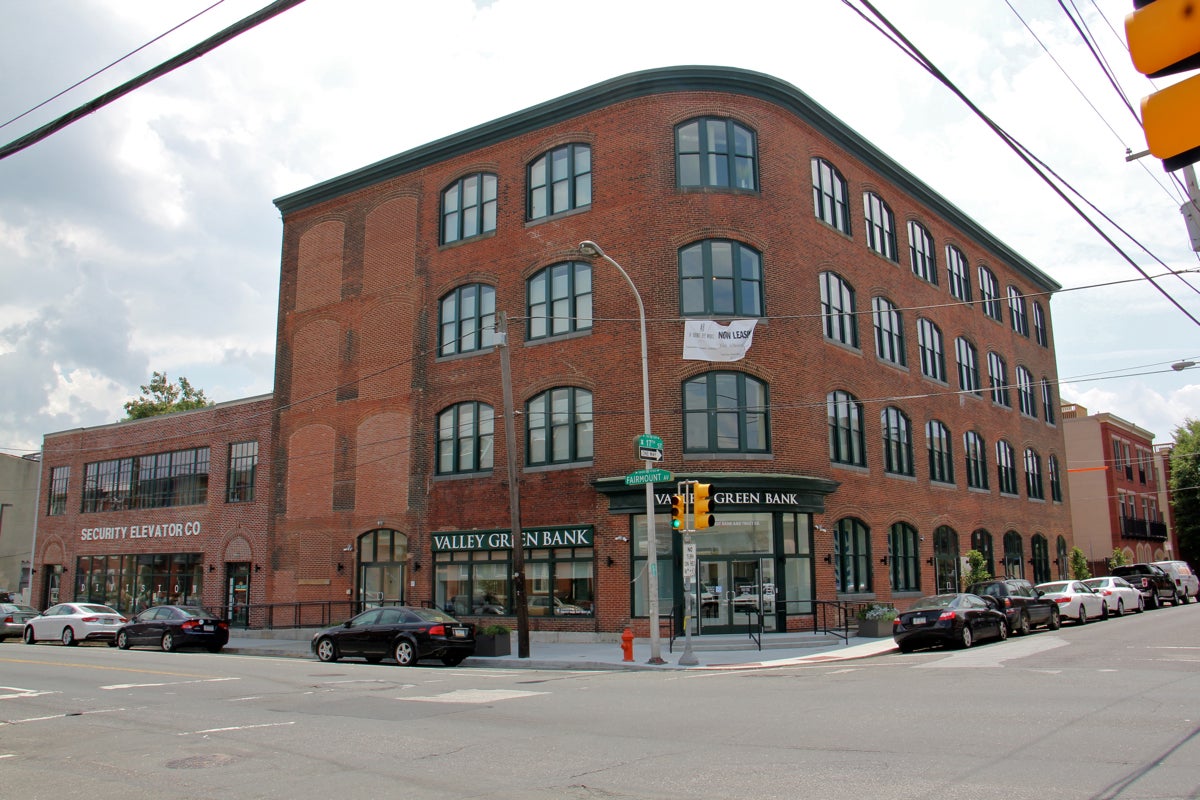Fairmount Ave filling in, growing up, searches for identity
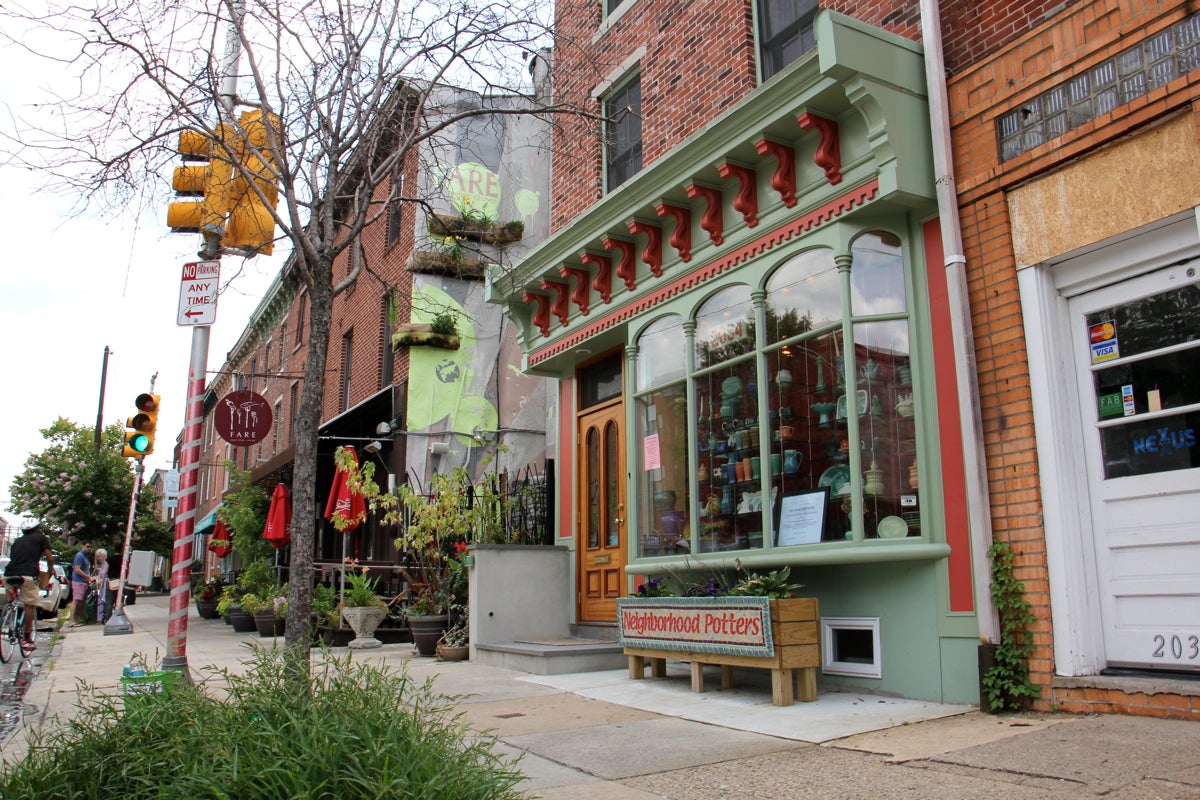
The changes are coming fast, if not furious, on Fairmount Avenue from the scaffold-clad Divine Lorraine at Broad, to construction projects on the corridor and restaurants westward toward Parkway.
Though this part of Fairmount Avenue had struggled through decades of dormancy – and a lack of identity — this corridor is attracting the same kind of youthful energy and development momentum that’s lifting other parts of Philadelphia. Fairmount Avenue’s evolution has been a little slower and more deliberate than some sections of the city, but it’s catching up.
So much so that earlier this year the Fairmount Community Development Corporation held a strolling charette of professional planners, business owners, developers, and residents to brainstorm a framework to guide the changing face of the Avenue over the next few years.
While private development seems to have taken on a life of its own along Fairmount Avenue, the CDC hopes to improve the Avenue’s public realm, including issues like pedestrian safety, parking, and historic preservation.
The last master plan for the corridor was developed about 14 years ago and, obviously, needed updating, explained CDC executive director Kevin Moran. “About six months ago, we started to put together a kind of quick fix, small interventions to help improve the Avenue. We call it the Lighter Quicker Cheaper Plan.”
This month, the CDC will lead an engagement process with local community groups to air the ideas and shape the plan, then pursue the funding to implement the concepts that rise to the top.
Fairmount fixes
On Jan. 16, Moran and 25 professionals and residents walked from 25th Street to Broad, with the challenge to come up with “fixes under $25,000 to help unify and beautify the corridor.”
Many of the ideas focused on pedestrian-friendly modifications to the sections where tourism and foot-traffic are heavy – particularly during Eastern State Penitentiary’s long Halloween bash – and around the coffee shops and restaurant rows.
The plan suggests painted or planted curb bumpouts as inexpensive experiments before committing to permanent capital projects. Other suggestions include illuminating walkways with lights on street trees, which would supplement the lighting from storefronts and stoops, and wayfinding signs that tell the distance and time to reach a destination by foot.
The plan also calls for more activation of the Avenue, such as pop-up retail events and expanding festivals eastward, where development is most active now.
“Now that we have this menu of ideas that we could really go after, we want the neighborhood’s help in prioritizing them,” Moran said. “And we want to see if there’s something we forgot, or is just stupid. ”
By August or September, the CDC hopes to share the Lighter Quicker Cheaper plan widely. “Then it’s a matter of chasing funding and implementing,” he said.
“Rather than investing a lot of time, money and resources in doing an entirely new master plan, we thought it was important to focus on some projects we might be able to do with a higher sense of urgency and be able to implement them rather quickly.”
Development pressure
That sense of urgency comes in response to the many development projects already underway or in the pipeline for Fairmount Avenue, particularly on the blocks east of Corinthian Street.
One of the largest is the adaptive reuse of a former factory complex at 17th and Fairmount. The four buildings of the A. F. Bornot French Steam Dyeing & Scouring plant were designed in 1901 by Louis Baker and Elijah Dallet, who had worked with Frank Furness on the American Trust Co. building, remnants of which still stand a few blocks away at Broad and Ridge Avenue. The dye works buildings were listed on the Philadelphia Register of Historic Places, but for more than 15 years the A. F. Bornot property was a blighted, vacant block.
The dye works site was purchased by MM Partners in 2014, and the renovation of the buildings into two single-family homes, residential lofts and retail space, including a Valley Green Bank, yoga studio, fitness center and home goods store, is nearly complete and partially occupied.
The home goods store is the second business on the Avenue for Jessie Menken., who opened Ali’s Wagon, a women’s clothing and children’s shop, at 2017 Fairmount in 2007. She chose the location partly because her young family lives in Fairmount, but mainly because Ali’s would be near the foot traffic for the neighboring hardware store, post office and State Store. “I didn’t realize how Fairmount Avenue was also such a thoroughfare between Broad Street and the Parkway. There are a lot of cars passing by; it’s such a connector.”
As Menken outgrew the space on the 2000 block, she was approached by the developer of the new project. Her new store, Division IV, offering “home and urban living” products, opened seven weeks ago at 1632 Fairmount. “People are happy to keep walking east [on Fairmount] if you give them a reason to,” Menken said.
The next big project in that stretch of Fairmount Avenue will likely be the redevelopment of 1501-05 Fairmount, the Overseas Motor Works, an Art Deco commercial building that was listed in the Philadelphia Register of Historic Places in 2015.
The building was designed in 1929 by Samuel Brian Baylinson, who had worked in the firm of Frank Hahn on the designs of the Warwick Hotel and the YMHA building. The Motor Works building was part of the Broad Street neighborhood’s auto industry row, and it has continued to operate as a car repair shop.
A developer has proposed a major residential structure capping the historic building, which would include retail on the ground floor. That project requires approval from the Philadelphia Historical Commission, which denied the project application at its June meeting.
Preservation and Development Domino Effect
Fairmount Avenue is bookended by excellent examples of historic preservation. As its western gateway, the transformation of the Fidelity Mutual Life Insurance Company into the Philadelphia Museum of Art’s Perelman Building is a stunning model of adaptive reuse. The much-anticipated rebirth of the Divine Lorraine is another feather in the cap of the development and preservation communities. And Eastern State Penitentiary, after decades of doubt, has survived as a historic and active cultural landmark.
As investment intensifies on this stretch of Fairmount Avenue, the extent to which preservation and reuse will play key roles is an open question.
The redevelopment of the Overseas Motor Works is being closely watched by the Preservation Alliance for Greater Philadelphia, which wrote the historic nomination for the building last year. Patrick Grossi, the Alliance’s director of advocacy, calls the building at 15th and Fairmount a test case.
“There’s clearly a desire to build something much denser, much larger, that’s going to accommodate a number of residential units,” Grossi said. The Alliance isn’t opposed to increased density on the block, but it has voiced concern at hearings of the Philadelphia Historical Commission over the choice of materials and the details of the proposed design, which so far isn’t a “sensitive alteration to the existing building.”
The Art Deco auto building is an example of a greater concern for the blocks surrounding the centerpiece project on North Broad: the renovation of the Divine Lorraine. “We could see a domino effect of the Divine Lorraine coming on line, if that drives increased interest in way that everybody assumes that it will,” Grossi said. “We can assume it’s going to come with increased development pressure, and it may likewise come with an increased desire to demolish some of the more modest buildings to make way for larger, denser developments.”
There are not many buildings that have been protected with historic designation in the neighborhood, and there are very few vacant lots along the Avenue, Grossi said. Which together could spell demolition for more modest but historic buildings.
Another preservation strategy for some buildings is the use of federal or state historic tax credits as an incentive for developers. “We’re fortunate in Pennsylvania that we have a state-level program,” Grossi said. “There’s not a ton of money devoted to it, but it’s certainly something we would want to help bolster preservation.”
The Preservation Alliance cast a spotlight on a smaller but significant project last month, when it presented a Preservation Achievement Award to Neighborhood Potters, 2034 Fairmount, which benefited from the city’s Storefront Improvement Program for the careful restoration of its original façade.
But other buildings – a warehouse with interesting details at 16th and Fairmount, a quirky streamlined Moderne one-story building at 18th Street, historic rowhouses and storefronts on many blocks – could be at risk as development heats up
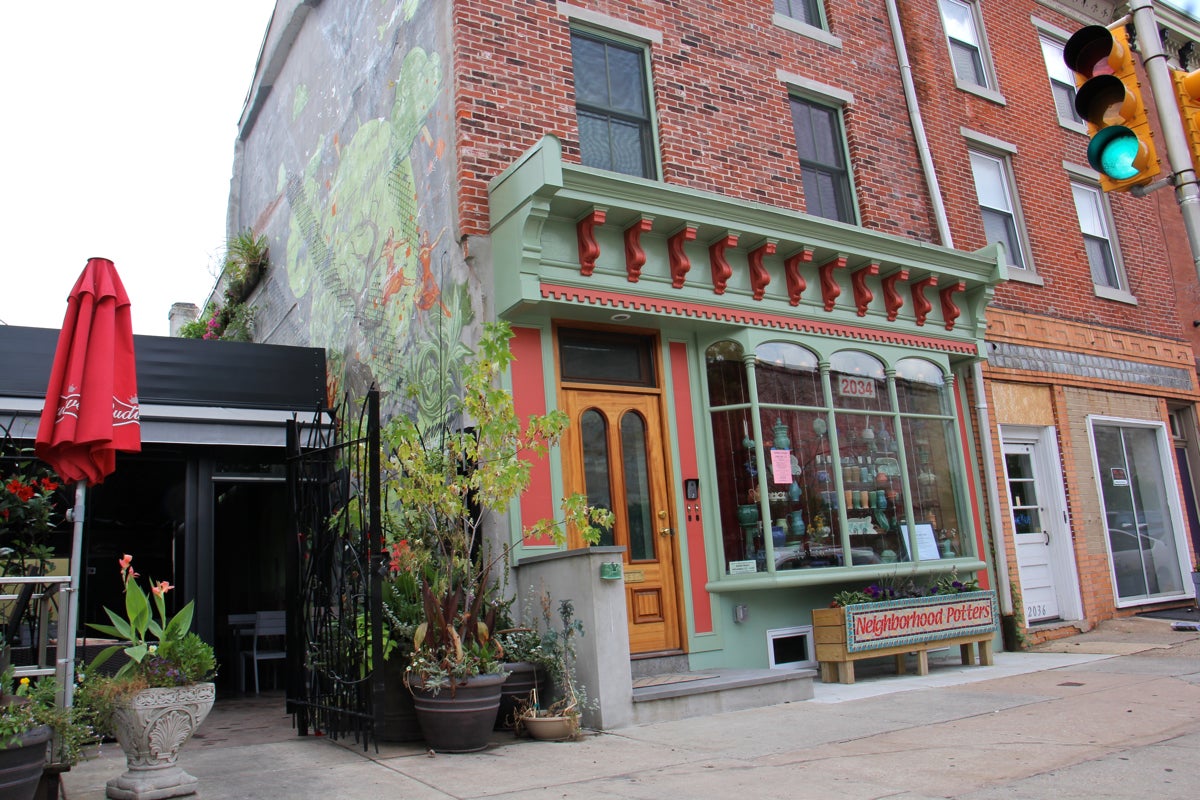
Finding an identity
One of the goals of the Fairmount CDC’s quick-fix plan is to help unify the diverse elements of the Avenue. But it’s hard to define a unifying theme, particularly on a corridor bifurcated, as the CDC’s Moran noted, by the placement of an imposing prison structure.
“The challenge of commercial corridors in general, especially in Greater Center City neighborhoods, is that they’re constantly changing,” Moran said. “What the marketing for Fairmount Avenue is right now might not be the same in five years. I think we have a little ways to go before we realize its full potential.”
But if he had to pin an identity on Fairmount Avenue, he believes arts and culture will play a significant role now and in the future. Its proximity to the Ben Franklin Parkway, its anchor at the Museum of Art, and the increasing cultural programming at Eastern State all contribute to the importance of the arts on the Avenue.
Grossi takes a more historic approach to defining Fairmount Avenue. “It’s a remnant of a time in Philadelphia’s history when residential activity was cheek to jowl with service corridor activity. It grew up in a time when cities weren’t necessarily thinking about identity. They weren’t thinking of a cohesive planning sense. They were thinking of function and proximity.
“I think of Fairmount Avenue as being where Eastern State Penitentiary is – which I think is an asset,” he said. The Avenue is now “a place of residences and restaurant activity, and one of the most significant structures in the city.”
Jessie Menken has experienced the rapid change along Fairmount Avenue over the past decade, from the days when she recognized most of her customers at her first store to recent weeks when mostly unfamiliar faces enter her new shop.
“I can’t say Fairmount Avenue has an identity,” she said. “The word that comes to mind is, it’s growing.”
WHYY is your source for fact-based, in-depth journalism and information. As a nonprofit organization, we rely on financial support from readers like you. Please give today.



